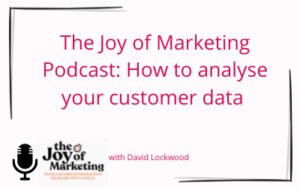As part of our recent end-of-year round-up on multi-channel marketing, we were fortunate to speak with 35 leading multi-channel retail brands, as well as three marketing experts, to discuss their predictions for 2021. Here’s what they have to say.
With changing customer habits, the end of the cookie, and advancing social-ecommerce capabilities, the consensus is clear. Retailers will be focusing their marketing efforts on engagement and retention in 2021.
Despite the challenges of 2020, the majority of our retailers reported the acquisition of new audiences. Online channels played a significant part in this. In our last post on the learnings from 2020, we highlighted not only the year-on-year increase in online sales, but its growth as a proportion of all retail. So how will retailers retain these new audiences in 2021?
Loyalty programmes will need to be accessible on all channels
Loyalty schemes are a proven way of retaining new and existing customers. They help improve performance across a range of metrics from AOV (Average Order Value) to LVT (Lifetime Value). We have seen many different strategies in action over the last 12 months, from monetary incentives to customer advocacy programmes designed to build a sense of brand community. To gain the best ROI on loyalty programmes in 2021, however, the key will be to make sure customers can easily participate at any time, regardless of device or channel.
User-generated content will pave the way for brand marketing
User-generated content (UGC) is playing an increasing role in brand engagement. Gone are the days when a retailer would rely solely on expensive outbound marketing campaigns. Research shows that customers thrive on more authentic, customer-led content such as user reviews or community forums. Therefore, in 2021, we’ll see more brands inviting customers to become brand ambassadors, perhaps by encouraging them to upload images of themselves alongside products, or use certain hashtags whenever they join in the conversation.
First-party data will drive user experience
With several of the large advertising platforms switching off third-party cookies in 2021/2022, many smaller brand advertisers could struggle to identify their customers and have less control over their media campaigns. The net effect over time could be greater online ad spend to achieve the same results. And of course, less targeted, less relevant messaging. In 2021, we’ll see retailers looking for more innovative ways to get to know their customers without relying on cookies.
Marketing insight companies are helping multi-channel retailers to overcome these challenges by using first-party data to identify customers. Getting customer permission customers to contact them by presenting appropriate opt- out or opt- in statements for different channels creates first- party data. Then linking the first- party data sources together in a single customer view database provides the base needed to drive continued digital marketing success.
As the cookie crumbles, loyalty schemes and user-generated content will also be crucial for building first-party databases in 2021.
Facebook features will enable seamless conversions
As multi-channel marketers continue to invest more of their media budgets in social platforms, we’re seeing the integration of more features to facilitate ecommerce. For instance, Facebook and Instagram – two of the most scalable social platforms in terms of ROI – have recently rolled out Facebook Shops and Instagram Shops. Retailers who sell their products through outlets such as Shopify can also now plug into Facebook directly to expand their audience.
The benefits of using these “server-side” integrations are three-fold. Firstly, multi-channel retailers regain control of their media campaigns – tailoring ads towards each outlet, and measuring outcomes more effectively. Secondly, the user experience is seamless, as both initial engagement and subsequent purchases occur within the same native (e.g. Facebook) environment. Thirdly, while remaining GDPR compliant, retailers can maintain a connection with customers that they might otherwise have lost due to ad blockers or the deprecation of cookies on the platform.
While Facebook continues to be one of the most scalable, opportunistic places to acquire vast audiences at the top of the funnel, media costs are predicted to rise. So for those retailers considering paid social as part of their marketing strategy, now is the time to act.
Last-click attribution will make way for more relevant KPIs
With as many as 40-50% of retailers still relying on the “last-click” model to measure performance, which isn’t effective on social platforms, many will need to rethink their approach to attribution in 2021. Only by running holdout tests – i.e. continually checking media campaigns across each channel – can brands make sure they are achieving incremental lift across all of their campaigns. They will need to understand exactly which KPIs they should be using for each channel. For Facebook, for example, this might be CPA (Cost per Acquisition) or ROAS (Return on Ad Spend).
Technology will solve the globalisation-localisation dilemma
It’s an age-old challenge. How do you roll out a multi-channel global media campaign without running endless iterations of the same advertising creative to adapt the language, currency or cultural nuance for each region?
Today, powerful social media algorithms can remove the burden of manually changing campaign settings for each country or demographic. For example, Facebook’s Dynamic Language Optimisation feature automatically adjusts ads so that they can be served in the consumer’s language, regardless of what country they’re in. So a French person who may be in the UK will still see the advert in French. Similar tools can then be used to adjust variables such as currency, or even local delivery options. In 2021, intermediaries such as paid social performance agencies and cross-border ecommerce platforms will help more multi-channel retailers make the most of this technology to localise their global campaigns.
It’s fair to say that 2020 threw down the gauntlet for many multi-channel retail brands. But by focussing on the lifetime value of each new and existing customer, they’ll be more than ready for the ‘year of retention’ that lies ahead.




